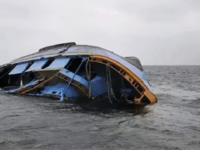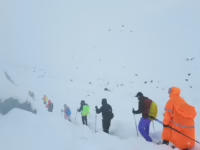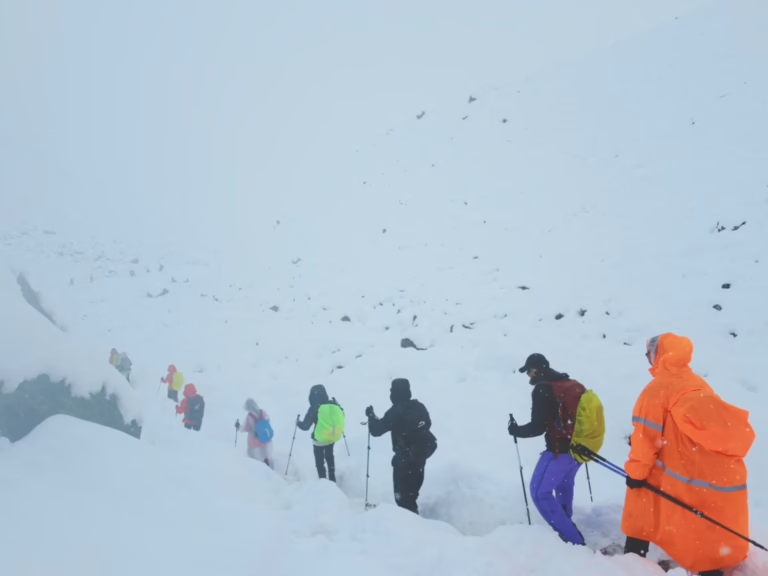After a perilous ordeal, stranded trekkers have been brought to safety in China’s Qudang township, while around 200 others remain trapped amid hazardous Everest conditions awaiting rescue.
Chinese state media confirmed on Sunday that rescue teams have successfully evacuated over 350 individuals who were trapped by severe snowstorm conditions on the Tibetan side of Mount Everest.
More than 500 adventurers were unexpectedly caught in intense snowfall and heavy rain while trekking through the Tingri region of Tibet, a key access point for climbers aiming to summit the world’s highest peak.
The evacuees were transported to Qudang, a modest township situated on the Tibetan slopes of Everest, according to reports from CCTV.
Authorities are coordinating ongoing rescue efforts to bring approximately 200 remaining trekkers, still stranded in hazardous weather, safely to Qudang in phases, as per local government arrangements relayed by CCTV.
Details remain unclear regarding the status of local guides and support personnel accompanying the trekking groups. Additionally, it is not confirmed whether climbers near Everest’s northern face, also located in Tibet, have been impacted by the adverse weather.
The heavy snowfall began Friday evening and continued relentlessly through Saturday in the valley, which sits at an average altitude of 4,200 meters (13,800 feet).
In response to the dangerous conditions, ticket sales and access to the entire Everest Scenic Area were halted from late Saturday, as announced on the official WeChat channels of Tingri County Tourism Company.
Chen Geshuang, a member of an 18-person trekking party that reached Qudang, described the conditions: “The mountains were soaked and freezing, making hypothermia a serious threat.”
Chen added, “This year’s weather is highly unusual. Our guide mentioned he had never witnessed such sudden and severe conditions in October before.”
Meanwhile, in Nepal, Sherpa communities are increasingly confronting erratic weather patterns driven by climate change, which heightens dangers for both climbers and the local Sherpa population who support expeditions.
Nepal’s Tourism Board provided an update on Sunday, noting that search and rescue missions continue following a marked improvement in weather, with clear skies reported in Kathmandu and many other regions.
This update follows a period of heavy rainfall that caused landslides and flash floods across Nepal, resulting in at least 47 fatalities since Friday.
In the eastern Ilam district bordering India, 35 people lost their lives due to separate landslides. Additionally, nine individuals remain missing after being swept away by floodwaters, and three others died from lightning strikes in different parts of the country.
The recent floods and landslides in Nepal’s mountainous areas coincide with ongoing flood crises in South Asia, including Pakistan, where approximately four million people have been affected.























